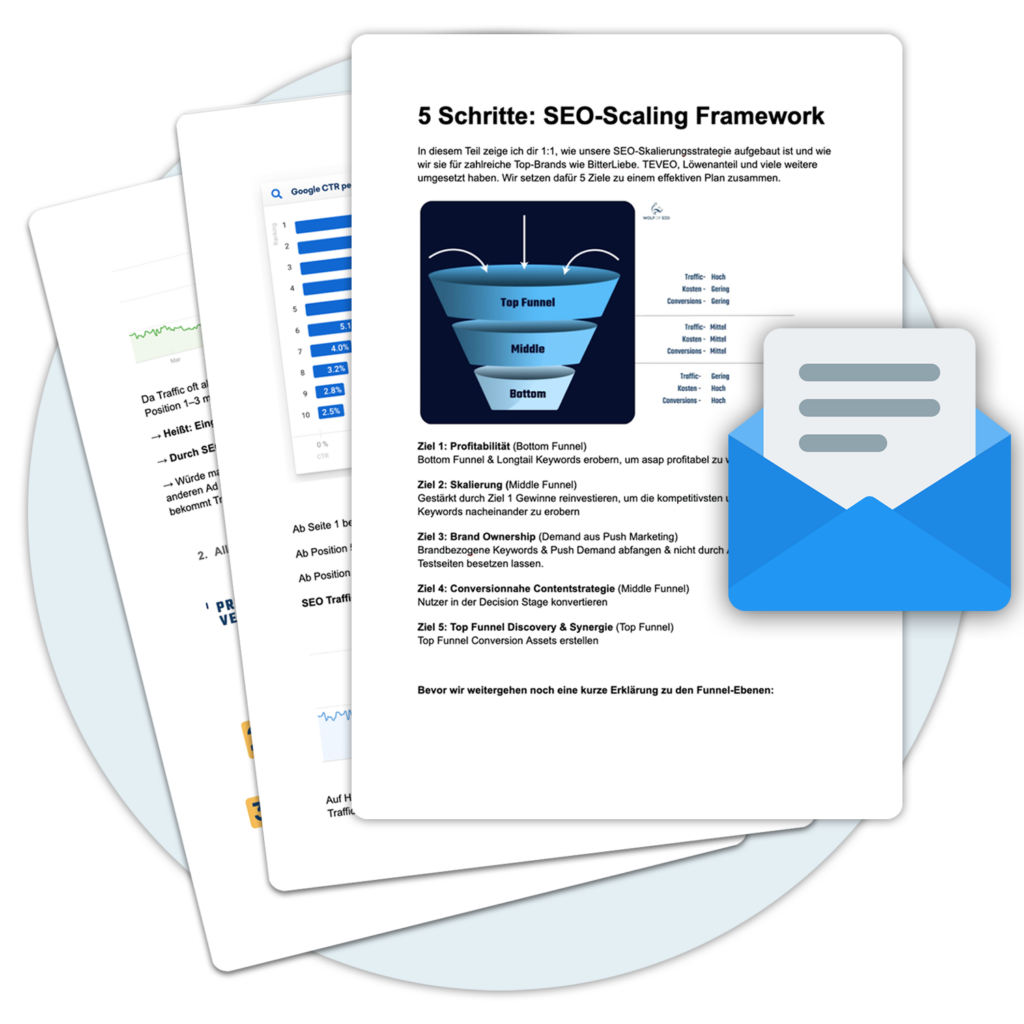What are elements of trust?
Trust elements are essential components of a website that serve to gain and strengthen the trust of visitors and potential customers. These elements include a variety of content and features designed to address concerns about the delivery, quality and security of data and payments on the website. E-commerce to reduce. Trust is particularly important in online retail, as customers are often hesitant to buy from a new or unknown online store.
Why are trust elements important?
Building trust is crucial to converting website visitors into buyers. By implementing trust elements, barriers in the purchase decision process can be minimized. These elements also strengthen customer loyalty, which has a positive long-term effect on sales figures. In a digital world where security concerns are becoming increasingly important, trust elements help to reassure customers that their data is safe and that the online store is credible.
What types of trust elements are there?
Elements of trust can take many forms. These include, among others:
- Testimonials and customer reviews: Authentic experiences and reviews from other customers provide an insight into the quality of products and services and are a valuable source for new customers to build trust.
- Certificates and quality seals: Official recognitions and certifications from recognized institutions signal integrity and high standards in terms of product quality and data protection.
- Technical security measures: References to data encryption and other technical security measures show that the protection of customer information is taken seriously.
- Social Evidence: Interactions in social media and positive press reports can also increase trust in an online store.
- Secure payment services: The integration of trusted payment services ensures that transactions are processed securely and sensitive payment information is protected.
It is important to note that trust elements should be effectively distributed throughout the website, including the Homepage and all subpages. However, care should be taken to avoid overloading so as not to overwhelm or even deter users.
Implementation and risks
The correct implementation of trust elements plays a decisive role in their effectiveness. They should be placed in appropriate locations, such as the shopping cart and the payment page, in order to strengthen user trust in critical phases of the purchasing process. By using A/B tests, it is possible to determine which positioning has the greatest positive effect. However, caution is advised: Fake certificates and suppressing negative reviews can have the opposite effect and seriously undermine user confidence. Honesty and transparency are therefore essential.
Importance of trust elements in e-commerce
In the digital age, where online shopping has become the norm, the E-commerce The challenge for companies in this sector is to create an environment that is perceived as safe and trustworthy by potential customers. The importance of trust elements in this sector cannot be overstated. Not only do they serve to allay customers' initial concerns, but they are also a crucial factor in promoting customer loyalty and repeat purchases.
Reduction of abandoned purchases
One key aspect in which trust elements play a decisive role is the reduction of abandoned purchases. Many online purchases are not completed because customers have concerns at the last moment, particularly in relation to payment security and data protection. Trust elements such as secure payment icons, data encryption notices and quality certificates can help to alleviate these concerns.
Increase in the conversion rate
By implementing trust elements on product pages, in the shopping cart and on payment pages, online retailers can noticeably increase the conversion rate. Customers who feel secure throughout the buying process are more likely to complete their purchases. Especially in highly competitive markets, these elements can make a significant difference and turn prospects into actual buyers.
Building and maintaining customer relationships
Elements of trust not only help to acquire new customers, but are also crucial for maintaining existing customer relationships. Customer feedback in the form of reviews and testimonials offers new customers orientation and strengthens trust in the brand. At the same time, the continuous updating and maintenance of these elements signals to existing customers that the company values their feedback and strives to constantly improve customer satisfaction.
At a time when online fraud and data security concerns are on the rise, trust elements play a crucial role in reassuring customers that their transactions are safe and their data protected. They are an indispensable part of any E-commerce-strategy, which aims to secure sustainable growth and build a strong, trusting relationship with customers.
Types of trust elements and their effect
Elements of trust can be diverse in nature, each contributing to customer trust in a unique way. To better understand the broad spectrum of these elements, it is helpful to divide them into several categories and consider their respective impact on users.
Testimonials and customer reviews
These personal recommendations and testimonials are invaluable as they provide newcomers with a trustworthy perspective on the quality of a product or service. Positive reviews can significantly increase confidence in the products on offer, making it easier to make a purchase decision. They help to create a direct link between the company and its customers and convey an image of reliability and customer satisfaction.
Certificates and quality seals
Certificates from recognized institutions and quality seals signal to website visitors that a company meets certain standards. They are proof of the quality of the products, reliable customer service or secure payment methods. These elements of trust create an immediately visible link to quality and security, which is particularly important when shopping online.
Technical security measures and data protection
References to data encryption and other security measures directly address users' concerns about the security of their personal data and financial transactions. By clearly communicating these security measures, companies can increase customer confidence in the technological reliability of the platform. A transparent privacy policy supports this effect by demonstrating that the company handles customer data responsibly.
Social proof and press reports
A company's presence on social media and in the press also has a positive effect on trust. Comments and interactions on social networks offer authentic insights into customer experiences and increase credibility. At the same time, positive press reports help to strengthen a company's reputation and build trust.
In summary, elements of trust play a crucial role in winning over potential customers and strengthening existing customer relationships. By carefully selecting and implementing these elements, companies can effectively communicate their commitment to quality, safety and customer satisfaction. Ultimately, they contribute to a positive shopping experience and encourage customers to place their trust in a company.
Implementation of trust elements on the website
Implementing trust elements on a website is a careful balancing act that aims to gain the trust of users without overwhelming or deterring them. Strategic placement and selection of trust elements is crucial to achieve optimal impact.
Strategic placement
Elements of trust should not be distributed randomly, but placed specifically in the places where they can have the greatest effect. The Homepage is often the first point of contact with the user and should therefore contain convincing trust elements that are immediately visible. Other critical points are product pages, the shopping cart and the payment page. Targeted signals can be used here to communicate security and trust and thus contribute to the purchase decision.
Avoidance of overloading
Although trust elements are crucial, overloading them can be counterproductive. Too many seals, certificates or testimonials can overwhelm users and create mistrust. It is important to find a balance that creates trust without compromising the user experience. A clear, uncluttered website that makes targeted use of trust elements is much more effective than a cluttered one that deters rather than attracts potential customers.
Honesty and transparency
One of the most important principles when implementing trust elements is honesty. Inauthentic ratings or misleading certificates can permanently destroy trust. Users are increasingly able to recognize and appreciate authenticity. Transparent communication about data protection, secure payment methods and the authenticity of reviews is essential. Precise information on data security and the encryption technologies used increases trust in the technical security of the website.
Finally, the implementation of trust elements on the website should be an ongoing process. A/B testing can help determine the most effective placement and design of these elements. Regular reviews and adjustments guarantee that the trust elements remain relevant and do not lose their intended effect. The right mix and placement of trust elements can ultimately make the difference when it comes to converting visitors into loyal customers.
Risks of overloaded and counterfeit trust elements
While trust elements play an important role in giving visitors to a website a sense of security and reliability, both their overloading and the use of fake elements can pose significant risks that can severely damage user trust.
Too many elements of trust
Paradoxically, too many trust elements can have the opposite of the desired effect. Instead of building trust, they can create confusion for users or give the impression that an attempt is being made to merely feign security. An overloaded design can cause the essential information about products or services to fade into the background, which can detract from the user experience and discourage potential customers from completing the purchase process.
Fake trust elements
The use of fake trust elements, such as non-existent certificates or manipulated customer reviews, is a direct deception of consumers. This approach may lead to an increase in conversion rates in the short term, but it can damage the company's reputation in the long term. Once customers realize that they have been deceived, trust is difficult, if not impossible, to restore. The consequences can be serious, from negative word of mouth to social media to legal consequences.
The impact on customer confidence
Customer trust is a fragile commodity. Once lost, it takes a great deal of effort to regain it. In the worst case, the loss of trust can lead to customers switching to competitors. Transparent and authentic communication is therefore crucial. Customers appreciate honesty and transparency, which ultimately has a positive effect on customer retention and loyalty. Companies must therefore carefully consider which elements of trust they use and how they present them so as not to jeopardize the trust of their customers.
Consciously addressing the potential risks associated with overloading or falsifying elements of trust is therefore essential to building and maintaining a positive online reputation. By placing authenticity and transparency at the forefront of their online presence, companies can create and maintain a solid foundation of trust with their target audiences.
Building trust through customer ratings and safety certificates
Building trust with customers is a fundamental challenge in online retail. Customer reviews and security certificates play a central role in this process, as they can signal the reliability and security of an online offering in a direct and verifiable way.
The power of customer reviews
Customer reviews provide a form of social proof that helps potential buyers make an informed decision. They reflect the real-life experiences of previous customers with products or services and therefore provide an immediate insight into their quality and reliability. Positive reviews can significantly increase the trust of new users, while negative reviews, provided they are constructive and addressed by the company, can underline credibility and efforts to achieve customer satisfaction.
Security certificates as an anchor of trust
Security certificates are another critical instrument for building trust in the E-commerce. They signal that a website offers secure payment methods, transmits data in encrypted form and generally complies with high security standards. Certificates such as SSL certifications, seals of approval from E-commerce-Certificates issued by the relevant associations or third-party certifications are often a decisive criterion for customers when choosing an online store. The presence of such certificates and their visible placement on the website can significantly strengthen the user's sense of security and thus increase the likelihood of a purchase.
These elements of trust-building should not be viewed in isolation, but as part of a comprehensive strategy to increase the credibility and security of an online offering. Through the targeted use and careful presentation of customer reviews and security certificates, companies can not only gain the trust of potential customers, but also strengthen their market position in the long term.
Optimal placement of trust elements for maximum impact
The placement of trust elements on a website is crucial to maximize their potential impact. A carefully considered strategy of where and how these elements are integrated can significantly increase user trust and therefore improve conversion rates.
At the top of the page: First impressions count
A prominent placement of security certificates and seals of approval directly in the visible area of the homepage immediately gives users a feeling of security. Positioning them near the logo or in the header of the website is particularly effective, as these areas are most likely to be noticed on the first visit.
Product pages and customer reviews
Product pages offer an excellent opportunity to place specific trust elements such as customer ratings or testimonials directly next to the product details. This enables prospective customers to take real reviews directly into account when making a decision. The integration of a rating system with the option to leave comments also encourages interaction and helps to build trust.
Shopping cart and checkout process
The shopping cart and especially the checkout page are crucial points in the purchasing process where customers often feel insecure. The visible integration of security certificates and references to encrypted data transmission can be crucial here to persuade the user to complete the purchase. A clear presentation of the payment options with corresponding security information also promotes trust in the entire process.
The use of A/B testing can provide further insight into where the placement of trust elements has the greatest positive impact on user behavior and conversion rates. By continuously testing different placements and types of trust elements, website operators can determine the optimal combination for their specific target group. A well-thought-out trust element placement strategy is a key factor in increasing a website's credibility and ultimately building user trust in the brand.
The influence of trust elements on the purchase decision
Elements of trust play a decisive role in the process of consumers' purchasing decisions in online retail. They not only help to underline the credibility of an online store, but also directly influence the behavior and decisions of buyers. These elements serve as indicators of the seriousness and reliability of a provider and therefore have a significant influence on the trust of potential customers.
Significance in the decision-making process
As part of the decision-making process, consumers are looking for reassurance that their choice will be a safe and satisfactory one. Trust elements such as customer reviews, certificates and quality seals offer precisely this confirmation. They provide users with the information they need to make an informed purchasing decision. Especially in a market characterized by a multitude of options, these elements can be decisive in determining whether or not a customer decides to buy from a particular online store.
Reduction of abandoned purchases
Elements of trust make a significant contribution to reducing abandoned purchases. By implementing and prominently displaying security certificates and references to secure payment methods at critical points in the purchasing process, such as the checkout page, any remaining doubts among consumers can be dispelled. These measures convey a greater sense of security, giving customers the confirmation they need to complete the purchase.
The presence of trust elements on a website can therefore mean the difference between an abandoned purchase and a successful transaction. By targeting trust elements that address the specific needs and expectations of their audience, online retailers can significantly increase conversion rates and build a long-term relationship with their customers. The ultimate goal is to create an environment where customers feel comfortable shopping online.Purchasing feel safe and in good hands.
« Back to Glossary Index






